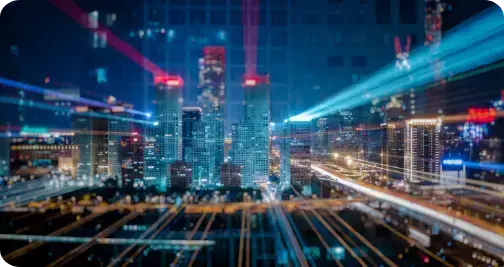Dc charging pile power management chip interface The interface of...
Components of the charging module
The charging module of DC charging pile is its core component, which is mainly responsible for rectifying and filtering the input alternating current, boosting and regulating the voltage (control, conversion) and other functions. Its performance directly affects the overall charging efficiency and charging safety of DC charging equipment. It contains transformer, rectifier, filter, heat dissipation system and safety protection system.
Main component
A transformer is an electrical device that changes the magnitude of alternating current voltage using the principle of electromagnetic induction. It consists of a magnetic core and two or more coils wound around it, known as windings. The primary winding connects to the power source, while the secondary winding connects to the load. When AC current flows through the primary winding, it creates a changing magnetic field in the core, which in turn induces an AC voltage in the secondary winding. Transformers can either step up or step down voltage, depending on whether the secondary winding has more or fewer turns than the primary. In short, transformers are indispensable in power systems, safely and efficiently converting electrical energy from one voltage level to another.
A rectifier is an electrical device that converts alternating current (AC) into direct current (DC). It achieves this by allowing current to flow in only one direction, effectively "rectifying" the AC waveform. The simplest rectifier is a diode, which permits current to pass through in one direction while blocking it in the opposite direction. More complex rectifiers, such as full-wave rectifiers, use multiple diodes to convert both halves of the AC cycle into DC, resulting in a smoother output. Rectifiers are essential components in power supplies for electronic devices, ensuring that the devices receive the steady flow of electricity they require to operate.
A filter is an electronic component or circuit that selectively passes certain frequencies while attenuating or rejecting others. It plays a crucial role in signal processing by allowing desired frequency components to pass through while blocking or reducing unwanted frequencies. Filters can be classified into various types based on their frequency response characteristics, such as low-pass, high-pass, band-pass, and band-stop filters. They are widely used in communication systems, audio equipment, and power supplies to ensure clarity and stability of signals. By refining the signal spectrum, filters help in enhancing the performance of electronic systems and maintaining signal integrity.
A heat dissipation system is a critical component in various devices, designed to dissipate heat and maintain optimal operating temperatures. It works by transferring heat away from the source, such as a processor or an engine, to the surrounding environment. Cooling systems can be passive, relying on heat sinks and natural convection, or active, using fans, pumps, and heat exchangers to enhance heat transfer. They are essential in preventing overheating, which can lead to performance degradation or damage. In computers, automotive engines, and industrial machinery, effective cooling ensures reliability, longevity, and safety of operation.
The safety protection system of a DC charging pile is a critical technology to ensure the safety of personnel, vehicles, and equipment during the charging process. It includes unique safety mechanisms such as pre-charging protection, main circuit safety detection, and remote diagnostic management. These systems feature basic protective measures against lightning, over/under voltage, overcurrent, short circuits, connection faults, and emergency stops, effectively safeguarding personnel, preventing vehicle overcharging, and ensuring operational safety. The design requirements of the safety protection system include functional and structural requirements, such as protecting users from hazardous circuits or moving parts, limiting fires, and preventing their spread outside the enclosure. Additionally, it involves personal protection against electric shock, insulation coordination, electromagnetic compatibility, and charging control/communication. Through these comprehensive safety measures, DC charging piles can provide fast charging services while ensuring the safety and reliability of the entire charging process.

DC CHARGING PIlE SERIES
DC charging pile is an efficient charging facility for electric vehicles, which uses direct current (DC) to directly charge the vehicle battery, significantly reducing the charging time. Compared with traditional AC charging piles, DC charging piles are able to provide higher power output and can usually charge an EV to 80% of its capacity in 30 minutes, providing users with a convenient charging experience.
Extended reading
About the heat dissipation materials in the indicator
About the heat dissipation materials in the indicator Main component...
Introduction to the bushing of DC charging pile transformer
Introduction to the bushing of DC charging pile transformer The...
Liquid cooling plate: heat dissipation guardian of DC charging pile
Liquid cooling plate: heat dissipation guardian of DC charging pile...
Elastic Charging Engine (ECE) for DC Charging Pile Communication Charging Module
Elastic Charging Engine (ECE) for DC Charging Pile Communication Charging...
Introduction to the power module in the card reader
Introduction to the power module in the card reader Main...
THE ESSC Brand promise
Global supply
Our products sell well all over the world, covering many countries and regions, through the global logistics network, to provide customers with convenient purchasing experience.
Rigorous quality
We adhere to the highest quality control standards to ensure every product meets industry regulations and customer expectations, earning trust through consistent excellence.
Excellent service
With a customer-centric approach, we provide prompt responses, professional support, and personalized services, aiming to deliver the best user experience and long-term value.





